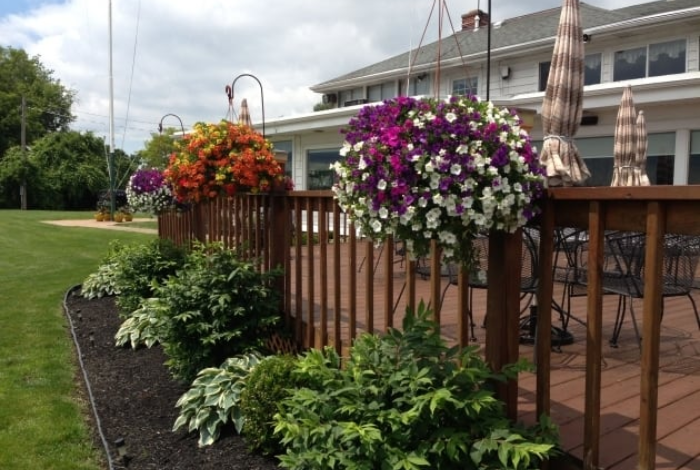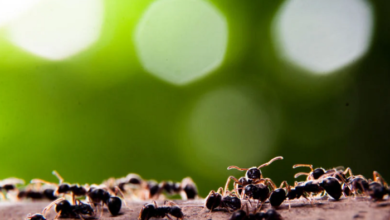Landscaping Along a Fence Line

When it comes to fence line landscaping, there are a number of common mistakes that can be made. Many people don’t realize that a fence line can be the perfect place to add a touch of beauty and style to a property. Unfortunately, these mistakes can lead to an ugly and unappealing fence line. To help ensure that you’re making the most of your fence line landscaping, here are some of the most common mistakes to avoid.
Benefits of Landscaping Along a Fence Line
Landscaping along a fence line can be a great way to enhance the look of your outdoor space, while also providing practical benefits. There are a variety of advantages to landscaping along a fence line, such as providing increased privacy, adding visual interest, and providing protection from wind and other elements.
By strategically planting trees, shrubs, and other plants, you can create a living privacy screen, while also adding color and texture to the landscape. Trees can help to reduce noise pollution, provide shelter from the sun, and create a sense of natural enclosure.
Plus, shrubs and other foliage can be used to soften the harsh lines of the fence, while also providing a barrier from prying eyes. Landscaping along a fence line can also be a great way to create a more inviting and welcoming atmosphere for your guests.
Adding a few decorative plants, such as ornamental grasses or colorful flowers, can create a warm and inviting atmosphere. And, with proper maintenance, landscaping along a fence line can also increase the value of your home.
Not only will your outdoor space look better, but it will be more inviting to potential buyers. So, if you are looking for an affordable and effective way to spruce up your outdoor living space, consider landscaping along a fence line.
Types of Plants to Consider for Fence Line Landscaping
When it comes to landscaping along a fence line, there are many different types of plants to consider. From flowering shrubs to trees of all sizes, there are a variety of options that can make your fence line look beautiful and inviting.
Some of the most popular plants to consider for fence line landscaping include evergreen shrubs, ornamental grasses, flowering vines, and trees. Evergreen shrubs, such as boxwood, holly, and juniper, are great for providing year-round color and texture to a fence line.
Ornamental grasses, such as fountain grass and switchgrass, can provide movement and texture to a fence line. Flowering vines, such as clematis and jasmine, can add a pop of color and beauty to an otherwise dull fence line.
Trees, such as Japanese maples and dogwoods, can provide a focal point to a fence line while adding height and texture. No matter what type of plants you choose for your fence line landscaping, you can create a beautiful and inviting space that will be enjoyed for years to come.
Planning and Preparing for the Project
Planning and preparing for the project of landscaping along a fence line is essential for the success of the project. The first step is to decide the type of fence that will be used. Once this is established, the location of the fence in relation to the landscaping needs to be considered.
Depending on the area, the fence may need to be at least six feet away from the landscaping. Next, it is important to take into account the size of the plants that will be used and the amount of sunlight they will receive.
This will determine the type of fertilizer and soil amendments that are necessary for the success of the project. Lastly, it is important to select the plants that will be used.
This includes taking into account the amount of maintenance the plants will require and the type of climate and soil they will be able to thrive. Planning and preparing for the project of landscaping along a fence line is an important step in ensuring the success of the project.
Choosing the Right Fence Type and Plantings
Choosing the right fence type and plantings is essential for creating a beautiful, functional outdoor space. A fence can provide privacy, security, and a sense of enclosure, while also establishing a distinct border between properties.
The type of fence used and the plantings chosen can make a significant difference in the overall aesthetic of the space. For example, a wooden privacy fence provides more security and privacy than a chain-link fence.
Additionally, the type of plants and flowers chosen can add color and texture to the landscape. Bushes and shrubs can provide a dense, lush border that will help to provide privacy and wind protection.
Flower beds and shrubs can be used to create a more formal look while adding color and texture to the landscape. When selecting plants, be sure to choose varieties that are suited to the climate and soil in the area.
For example, a dry area may require drought-tolerant plants, while a wet area may require plants that are more tolerant of moisture. Proper selection and placement of plants will help to ensure that the landscape remains healthy and attractive for many years.
Implementing the Design
there are several important steps to take. First, it’s important to consider the overall size and shape of the yard to determine the best approach when selecting plants and other landscaping materials.
Next, it’s important to consider the types of plants that will thrive in the soil and climate conditions of the area and to select plants that will both complement the overall design and provide the desired amount of coverage along the fence line.
Once the plants are selected, the installation of the fence and landscaping can begin. Depending on the size of the yard, the fence can be installed in sections or as a single piece. Once the fence is in place, the soil should be prepared for the plants, whether that means adding compost or other fertilizers.
It’s also important to consider drainage when planting, as some plants may require more or less water than others.
Finally, the plants should be installed in the desired locations, and any additional features such as walkways, patios, or seating should be added to complete the design. With careful planning and attention to detail, a beautiful landscaping design along a fence line can be achieved.
Common Mistakes to Avoid in Fence Line Landscaping
There are several common mistakes people make that can drastically alter the appearance of their yard and detract from the overall beauty of the landscaping. One of the most common mistakes people make is overfilling the area with plants.
Too many plants, especially those that are too close together, can make the area look cluttered and unappealing. Another mistake people make is planting too many short plants. Short plants are great for adding texture and color to a yard, but they should be limited to the outer edges of the fence line and should not be the main focus of the landscaping.
Instead, taller plants should be used to create a backdrop for the shorter plants. Additionally, when landscaping along a fence line, it’s important to be aware of how the plants are placed.
For example, if the fence line is facing the sun, then plants that require full sun should be planted in the front of the fence line, and those that require more shade should be placed in the back. By avoiding these common mistakes, you can create a more aesthetically pleasing fence line landscape.
Conclusion
Landscaping along a fence line is an excellent way to enhance the beauty of your yard and create a unique and inviting outdoor space. It is also a great way to add value to your home and increase both the curb appeal and the overall value of your property.
With careful consideration and a few simple steps, your fence line can become an eye-catching feature of your yard. By choosing plants that will thrive in the soil and environment, adding in a few accent pieces, and properly caring for your plants, you will be able to create a beautiful and inviting outdoor area along your fence line.




